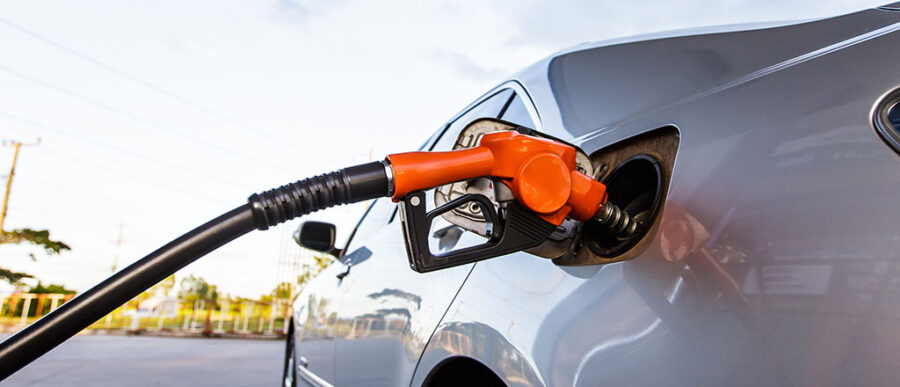In an effort to improve U.S. energy security, reduce carbon emissions and save consumers money at the pump, the Obama administration has increased its Corporate Average Fuel Economy (CAFE) standard to 54.5 miles per gallon (mpg) by 2025, significantly above the average of 25.4 mpg in 2014. The new targets, which will operate on a gradual scale, are expected to reduce greenhouse gas emissions by six billion metric tons by 2025, while nearly doubling the fuel economy of many vehicles.
But will the new standards really have as much impact on greenhouse gas emissions as the optimists anticipate? In an upcoming (March 2015) article in the American Economic Review, Arthur van Benthem, a Wharton business economics and public policy professor, and Mark Jacobsen, an economics professor at the University of California, San Diego, analyze why policymakers and forecasters would do well to tone down their expectations as a result of some unintended consequences of setting standards so high.
Van Benthem notes that researchers have long been well aware of one such unintended consequence, known as the “rebound effect.” The “rebound effect,” he explains, comes when drivers of more fuel-efficient cars decide to take advantage of their lower per-mile fuel costs by driving more than they did in the past. “Typical estimates of the rebound effect are about 10%,” van Benthem says. That is to say, “people drive about 10% more [miles] when they switch to a vehicle that is twice as fuel efficient.”
Analysts, policymakers and the public have ignored the much less visible impact of higher fuel efficiency on the market for used cars, van Benthem notes. “The impact of such higher standards on the vast market for used vehicles has been much less well understood, along with the consequences of higher CAFE standards on overall gas consumption that results from that impact,” says van Benthem. In their research, van Benthem and Jacobsen have attempted to quantify that impact.
The Used Car Impact
Currently, 94% of the vehicle fleet in the United States is more than one year old; “used cars” are by far more numerous than the new vehicles whose miles-per-gallon performance is the usual focal point of regulators. Thus, notes van Benthem, “the way that the fleet of used vehicles evolves has enormous consequences for overall gasoline consumption, and the environment.”
Rather than raise gasoline taxes to reduce greenhouse gas emissions, the United States — like many other governments — uses fuel-economy standards, which require that a manufacturer’s sales-weighted average fuel-economy meet or exceed a new threshold every year, explains van Benthem. “A little-discussed problem with such standards is that they increase the prices of new vehicles, as new technology is needed to make them more fuel-efficient,” van Benthem points out. Moreover, to comply with the standard, manufacturers have an incentive to raise the prices of the least fuel-efficient models sold within each vehicle class so that the company’s average mpg goes up. As prices for new cars rise, the demand for used vehicles also goes up as drivers seek an alternative to paying more. Therefore, prices for used cars also rise.
As a result, there is a growing volume of greenhouse gas emissions from the fleet of used vehicles, many of which have been on the road for 10 years or more. Thus, higher CAFE standards have the unintended consequence of increasing emissions from used cars that, depending on their age, may fail by a long shot to meet the higher standards that regulators want to meet.
The Leakage Effect
What’s the overall impact on emissions? Using a huge database of information about used vehicles, van Benthem and Jacobsen find that “about 15% of the emissions reductions [resulting from higher standards imposed on] new vehicles come back as a result of the increased consumption of fuel on the part of older vehicles still on the road.” Thus, while the Obama administration has estimated that the new rules will save the United States 2.2 million barrels of oil per day by 2025, the real number may be lower, notes van Benthem. Not surprisingly, all cars are more likely to get scrapped the older they get, he says. More surprisingly, perhaps, the least efficient vehicles were discovered “to hang around a lot longer than the most efficient cars,” and these tend to be the cars whose used resale value increases the most.
“People drive about 10% more [miles] when they switch to a vehicle that is twice as fuel efficient.” –Arthur van Benthem
Gasoline price swings are another variable that has important implications for owners of used vehicles, explains van Benthem. “We find that if the gasoline price increases by one dollar per gallon, the value of a 15-mpg vehicle [of average age] goes down by almost $800, while the value of an efficient 40-mpg vehicle [of average age] increases by about $600. Cars with fuel-economy above 25 mpg tend to increase in value when gasoline prices go up.”
In their study, the researchers note that this complex trend has implications elsewhere around the world where government policymakers are pursuing the same goal of reducing vehicle emissions. “Our estimates imply that changes in used vehicle prices lead to significant changes in composition and scrappage in the used fleet,” they write. “This has important implications for current fuel economy policy in the United States, Europe, China, and Japan: In our simulations, tightened standards for new vehicles lead to a leakage effect that offsets 13%-16% of expected gasoline savings.” Moreover, they add, “the effect of used car leakage on the overall effectiveness of policy is often ignored by policymakers” elsewhere around the world, “even though its magnitude rivals or exceeds the often-cited mileage rebound effect.”
Might policymakers in the U.S. and elsewhere be better off pursuing a different approach to lowering vehicle emissions? Like an overwhelming percentage of economists, van Benthem argues in favor of imposing higher taxes on gasoline, while admitting that such an approach is politically unpopular, especially in the United States. In a University of Chicago survey, 92% of economists said that they would prefer a gasoline tax over raising fuel-economy standards, as in the CAFE initiative. But only 22% of the American public said in the same survey that they preferred higher gasoline taxes to the approach embodied in CAFE.
“The way that the fleet of used vehicles evolves has enormous consequences for overall gasoline consumption, and the environment.” –Arthur van Benthem
Van Benthem says that many people don’t understand why CAFE and its counterparts elsewhere offer a flawed approach to a serious problem. “The problem with CAFE standards is that there is nothing you can do to encourage people to drive less” simply by assuring them that they will be getting better gas mileage, he notes. In fact, many people may decide to take longer excursions in order to take advantage of the lower per-mile costs. And if a significant number of people do that, the environmental benefits of imposing those higher mileage standards may wind up being far less significant than environmentalists anticipated. On the other hand, gasoline taxes make fuel-efficient new vehicles look more attractive to prospective buyers, and also encourage drivers of new and used cars to take fewer or shorter trips, which in turn reduces their fuel costs and also does less harm to the environment.
Another alternative to CAFE is to impose higher annual registration fees on those vehicles that are less fuel-efficient. In Europe, says van Benthem, “many countries adjust registration taxes or road taxes based on a car’s fuel-economy.” For example, the Netherlands and Germany tax vehicles based on their carbon dioxide emissions or an approximation thereof.
The Problem with Raising Taxes
According to van Benthem, U.S. government regulators agree that gasoline taxes are a much better way of achieving their environmental goals, but “they have given up thinking that they could convince the politicians or the public.” In the U.S., at least, “no politicians get elected [by] raising tax rates.” In Europe, gasoline taxes are much higher than in the United States. Typical gas prices in the U.S. today are slightly above two dollars per gallon, of which about 50 cents is tax (roughly 20 cents for federal taxes, plus 30 cents for state taxes). In Western Europe, typical gasoline prices are around $6.50 per gallon — and higher tax rates in those countries explain most of this difference, van Benthem notes.
Notwithstanding the imperfections of fuel-economy standards, “the tightening of CAFE is a major step forward in current U.S. climate change policy,” says van Benthem. “The new CAFE standards, along with the Environmental Protection Agency’s recent regulations on emissions from power plants, have enhanced the U.S.’s negotiating position in international climate summits. For the first time this century, the U.S. is in a position to credibly call on others to act as well.”



